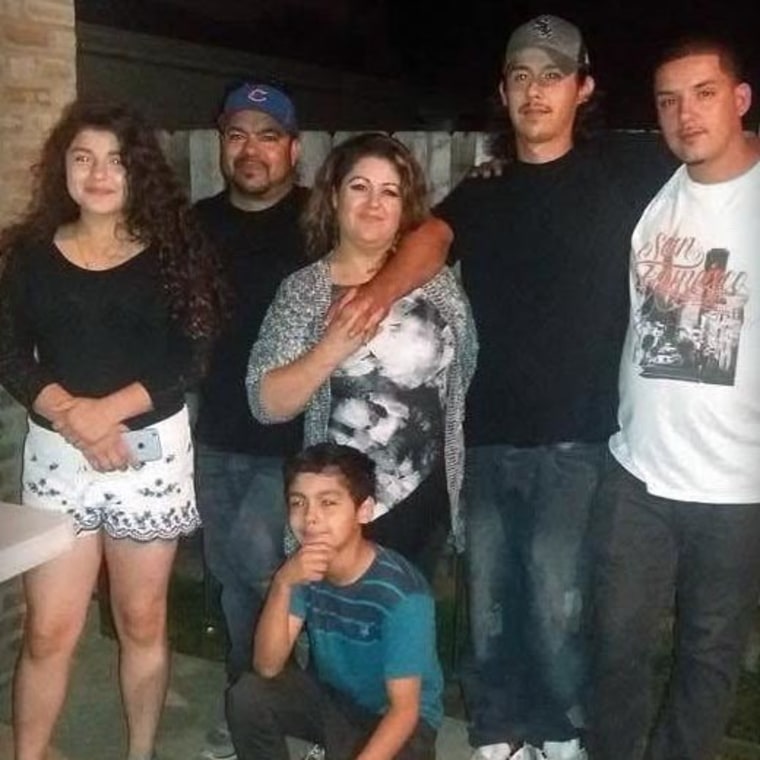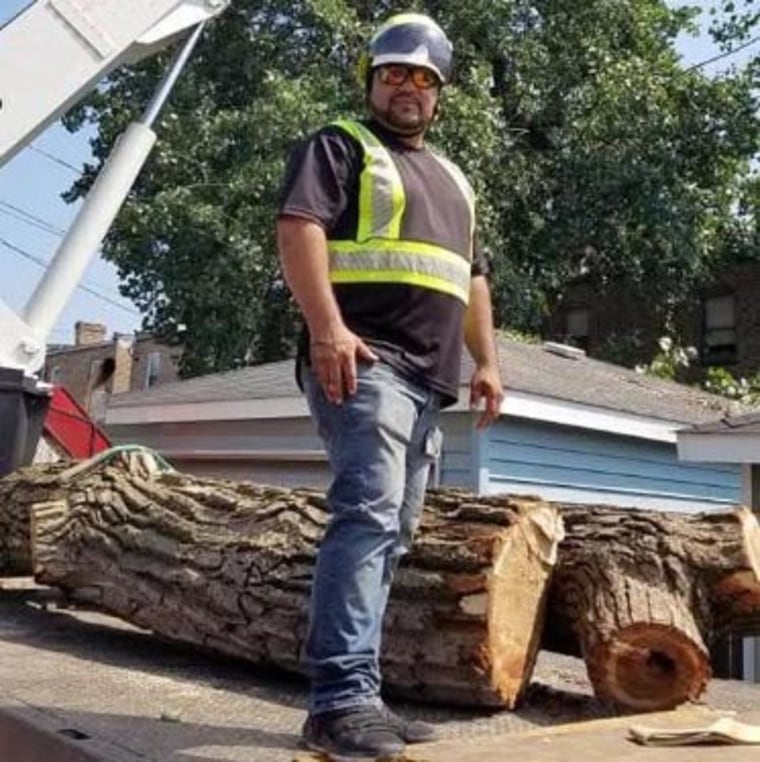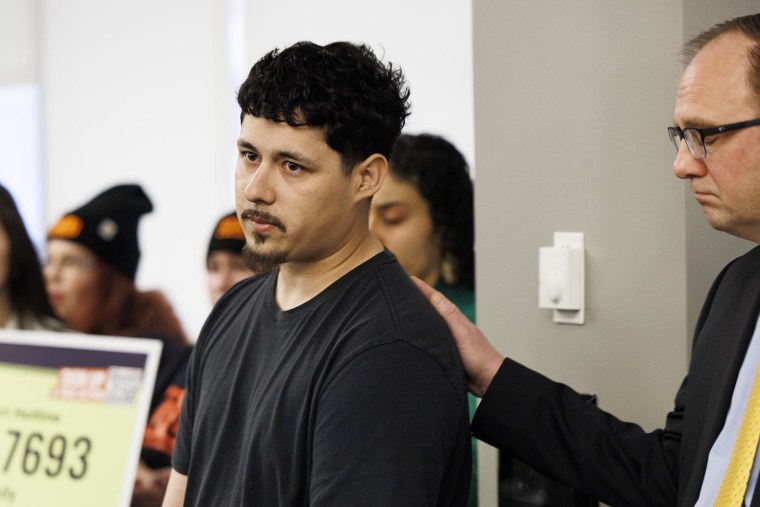A Chicago father who has lived in the United States for about 30 years and has no criminal record has become a prime example of the kind of immigrants being swept up without warrants by Immigration and Customs Enforcement as the Trump administration seeks to increase deportation numbers, according to immigration advocates who say the arrest and that of others were unlawful.
Abel Orozco, an undocumented immigrant, was swept up in an arrest about six months ago when ICE agents without a warrant went into his backyard and onto his porch, according to the National Immigrant Justice Center. The agents were looking for his eldest son, who is also an immigrant, but detained Orozco instead when his car pulled up to the property, according to his attorney.

“They immediately reached through the car window, forcibly opened the car and immediately handcuffed Abel Orozco and threw him in the back of one of their cars. It was only 45 minutes to an hour later that they realized they didn’t have the right person, but instead of releasing him, they kept him handcuffed until they could figure out who he was and then claim that his arrest was based on a warrant that didn’t exist,” Mark Fleming, the associate director of litigation at the center, told NBC News.
Orozco remains detained, and his attorneys and family are seeking his release.
His case has drawn attention to the issue of warrantless arrests by immigration authorities as the Trump administration has stepped up detention of immigrants in the interior of the U.S. Fleming says Orozco’s detention was illegal and showed how ICE agents in recent months are “trying to cut as many corners as they can, as far as the traditional guardrails that you would have, such as establishing probable cause that the person’s removable and likely to escape.”
“They’re sweeping up people who are long-standing residents of the United States, who have very deep, deep roots here,” he said.
ICE did not immediately respond to requests for comment, but the Trump administration has defended its tactics and mission of increasing deportations to defend the U.S. borders and said immigration enforcement was key to Trump’s campaign promises.
Attorneys: ICE needed probable cause
But according to documents filed by attorneys in Orozco’s case in March, his arrest and that of about two dozen others, including a U.S. citizen, violated a 2022 settlement that said that in order to make arrests without warrants, ICE needed to have probable cause that an immigrant was in violation of a law or regulation and was likely to escape before a warrant could be obtained for their arrest. That agreement was born out of a lawsuit over immigration raids in 2018 during the first Trump administration, and applied to six states: Illinois, Indiana, Wisconsin, Kentucky, Kansas and Missouri.
NBC News reported in Chicago at the time of the immigration raids in which Orozco and others were arrested in late January. The Trump administration said those immigration arrest operations targeted criminals, but from the beginning there were concerns that law-abiding migrants with varying forms of legal immigration status could also be rounded up, otherwise known as “collateral arrests.”
Asked about collateral arrests at the time, Sam Olson, the enforcement and removal operations director in the Chicago field office, said that they were possible.
“We’re tasked to enforce the immigration laws,” he said. “If somebody is here illegally, whether or not they’ve committed crimes, there is that possibility that they could be arrested.”
ICE has also been criticized for warrantless arrests during the sweep of immigration arrests in Los Angeles, where a judge ruled last week that immigration officers in Southern California can’t rely solely on someone’s race or the fact that they’re speaking Spanish to stop and detain them. That order barred the detention of people unless the officer or agent “has reasonable suspicion that the person to be stopped is within the United States in violation of U.S. immigration law.”

The U.S. attorney for the Central District of California, who was also named as a defendant in that suit, denied any wrongdoing and said the government maintains “our agents have never detained individuals without proper legal justification. Our federal agents will continue to enforce the law and abide by the U.S. Constitution.”
Almost half of the people currently in ICE custody have neither been convicted of nor charged with any crime, ICE data shows. Late last month, internal data obtained by NBC News showed that after six months of aggressive immigration enforcement and promises to focus on deporting violent criminals, the Trump administration has arrested and detained only a small fraction of the undocumented immigrants already known to ICE as having been convicted of sexual assault and homicide.
The data tallied every person booked by ICE from Oct. 1 through May 31, part of which was during the Biden administration. During that time, a total of 185,042 people were arrested and booked into ICE facilities and, of those, 65,041 of them were convicted of crimes. The most common categories of crimes they committed were immigration and traffic-related offenses.

Fleming said Orozco’s continued detention is having a devastating effect on his family, as his wife has breast cancer and their home could be in foreclosure due to lost income from his client’s tree-cutting business, which one of his client’s sons has been forced to suddenly take over.
Fleming said Orozco’s case also shows the complications of the immigration system and how one decades-old decision can lead an immigrant who has built a life in the U.S. to suddenly be facing deportation.
He said Orozco came legally to the United States from Mexico in the late 1990s after his sister petitioned for him. Years later, Orozco went to Mexico to see his father who had suffered a massive stroke — but since Orozco went without permission to leave the country, he wasn’t allowed entry into the U.S. and was sent back to Mexico. Orozco later re-entered the U.S. and became undocumented, where he lived for decades and established his family and business, Fleming said.
A judge could decide in the next few weeks if Orozco will be released, a move which the government is seeking to block.
Fleming said he is greatly concerned other arrests like Orozco’s by ICE could follow.
“I fear that these large-scale sweeps in communities, and sweeping up whoever is there, is likely to lead to tremendous error rates as far as who gets arrested,” he said. “They’re cutting so many corners and are desperate for numbers because of the pressures from the White House, the risks of errors just keeps going up.”